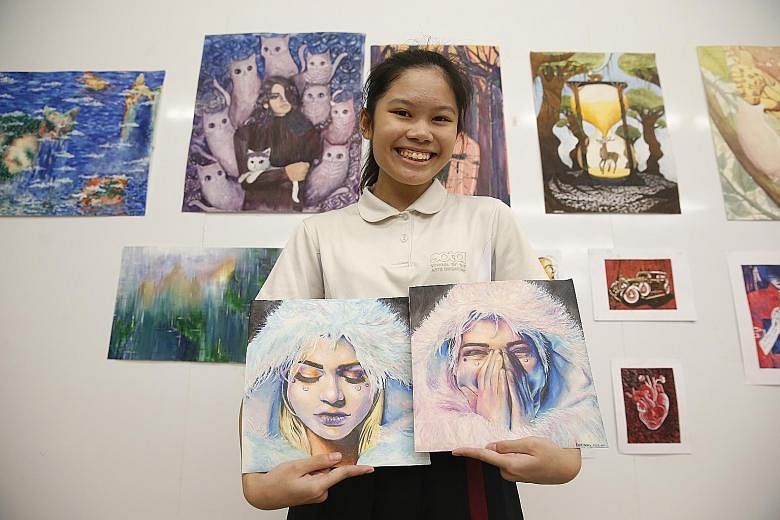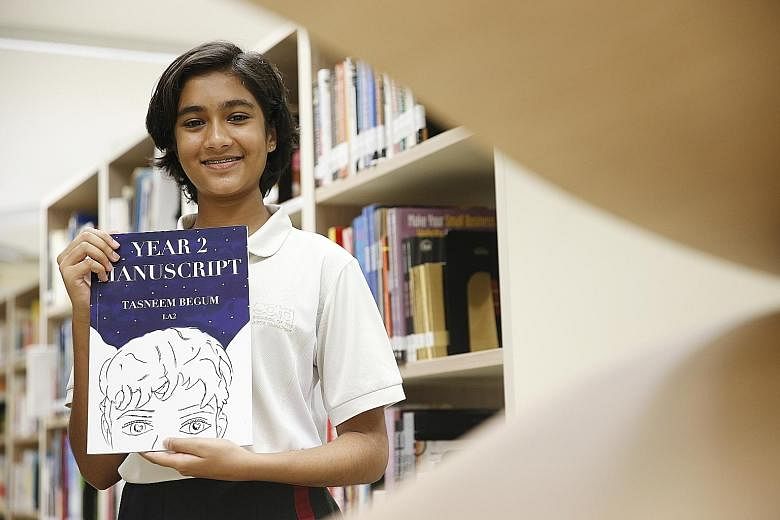There has been a trend in recent years of well-off parents enrolling their children in arts enrichment classes to boost their chances of entering the School of the Arts (Sota).
But the school has been making a concerted effort to take in students from a wide background and has seen some results so far, said Sota principal Lim Geok Cheng.
Back in 2015, students from Sota came from a narrower pool of primary schools - just 41 per cent of all primary schools then. But this has now grown to 49 per cent out of the 190 primary schools here for this year's intake.
"We now have students who come from a wider mix of neighbourhoods, and not just the richer neighbourhoods," said Ms Lim, adding that the school hopes to continue to improve this figure, though it has not set a specific target.
In comparison, students at other specialised independent schools here, including the Singapore Sports School and the School of Science and Technology, Singapore, come from around 30 to 40 per cent of all primary schools here.
Sota receives up to 1,000 applications every year, and admits about 200 in each intake. All of them are admitted through Direct School Admission (DSA), which can guarantee pupils with talent in the arts a place in the school even before the PSLE.
Since 2014, the school has been reaching out to primary schools and parents to address misconceptions about its admissions process. Its faculty have also made an extra effort to tease out the authenticity of students' portfolios and their motivations for joining the school.
Admissions staff have also been briefed to look out for students who have no formal training but display innate ability in an arts discipline.
"We are very clear that we don't want to be elitist, or (fuel a perception) that the school is only for the rich," added Ms Lim.
To secure a place in the school, which offers the well-regarded International Baccalaureate (IB) programme, some parents try to game its admissions process - involving a portfolio review, an audition and an interview - by shelling out big bucks for preparatory classes.
These classes, which promise to enhance a student's chances by providing coaching in arts disciplines and portfolio preparation, can cost nearly $10,000 a year.
Sota distinguishes innate ability from hothoused talent through sections in auditions that require students to improvise on the spot and adapt to unknown scenarios using their creativity, said Ms Lim. "We try to discard (all elements) that have to do with money," she added.
For example, besides executing a rehearsed routine, an aspiring dance student may also be asked to perform on the spot to a piece of music he has never heard before, said Sota vice-principal Amy Khoo.
A student keen on specialising in the visual arts is not judged on how big or well-framed his portfolio is, but on his understanding of composition, proportion and space when given an unseen task.
It is often thought that a child has to be able to afford ballet, piano or violin lessons to be admitted, but the school does not always require formal arts training, added Ms Khoo. It has seen a fair share of students who enter the music specialisation because they can sing, or through exposure to the arts in their school's co-curricular activity.
Figures on such students with no formal training, or those on financial assistance, are not available.
But students from households with a monthly gross income of under $7,200 can receive a bursary that covers between 33 and 100 per cent of the school fees, which are between $350 and $450 a month.
Sota Year 2 student Tasneem Begum Mohd Mustapha, who is on the bursary scheme, applied to the school to study literary arts at the suggestion of her teacher, who noticed that she had a flair for writing. She was the only pupil from Telok Kurau Primary School who applied to Sota in her year.
In comparison, she noticed that some well-known primary schools, like convent schools, were over-represented when she joined Sota.
"There's a perception that students from neighbourhood schools can't do much, and many people think that you have to be the cream of the crop to apply for DSA. But it'll be nice to see more students from other schools at Sota, because the arts give you a different perspective on life," she said.
Her batch mate, 14-year-old visual arts student Dean Phang, also had no formal training when she applied to Sota as a pupil in Greenridge Primary School.
But she saw it as an advantage.
"It allowed me to have a fresh perspective on certain art topics, and made me more determined to do better."



